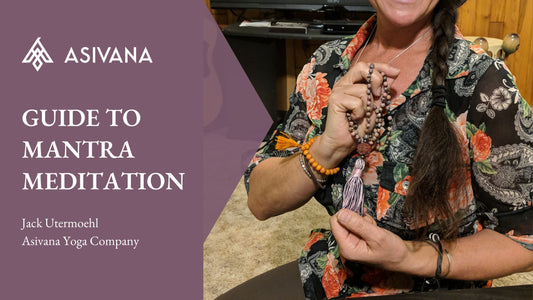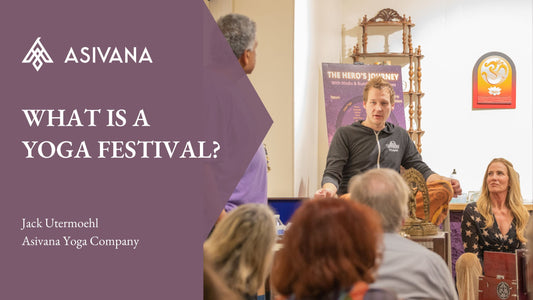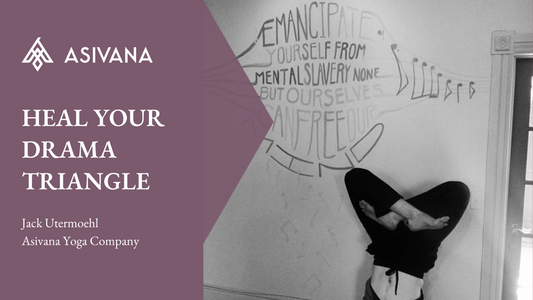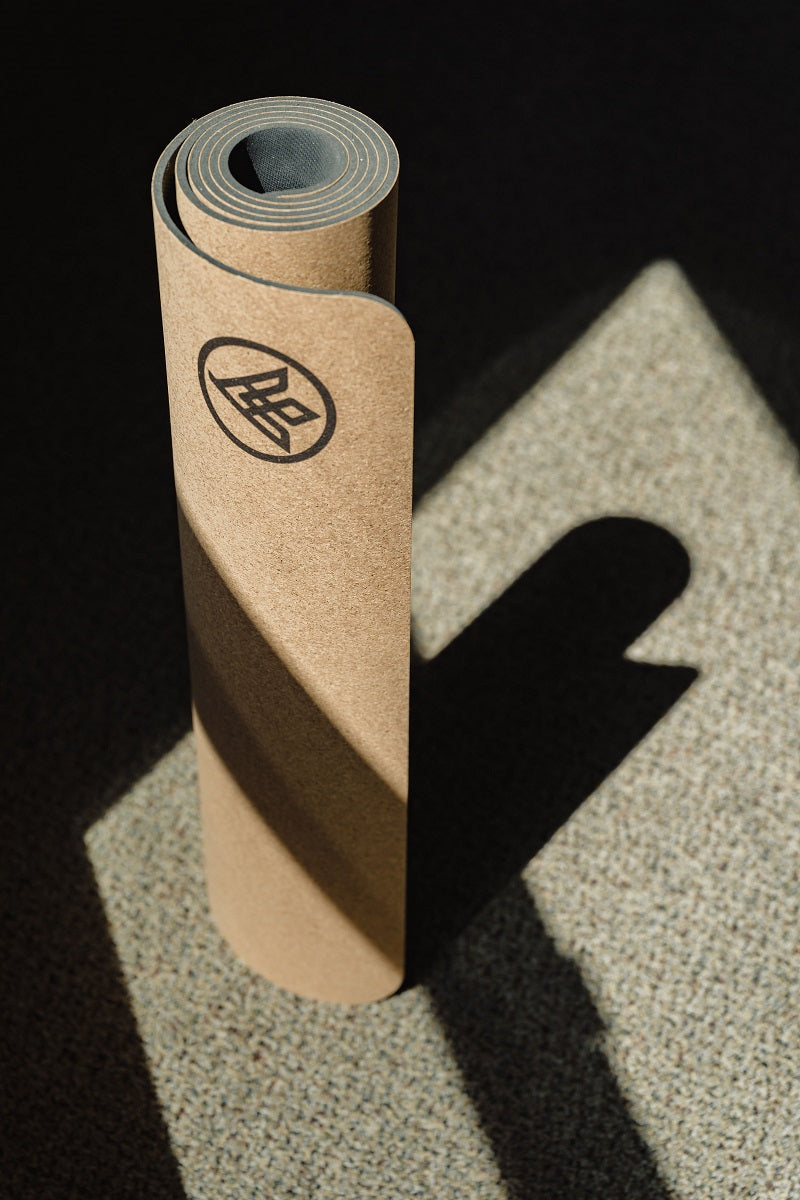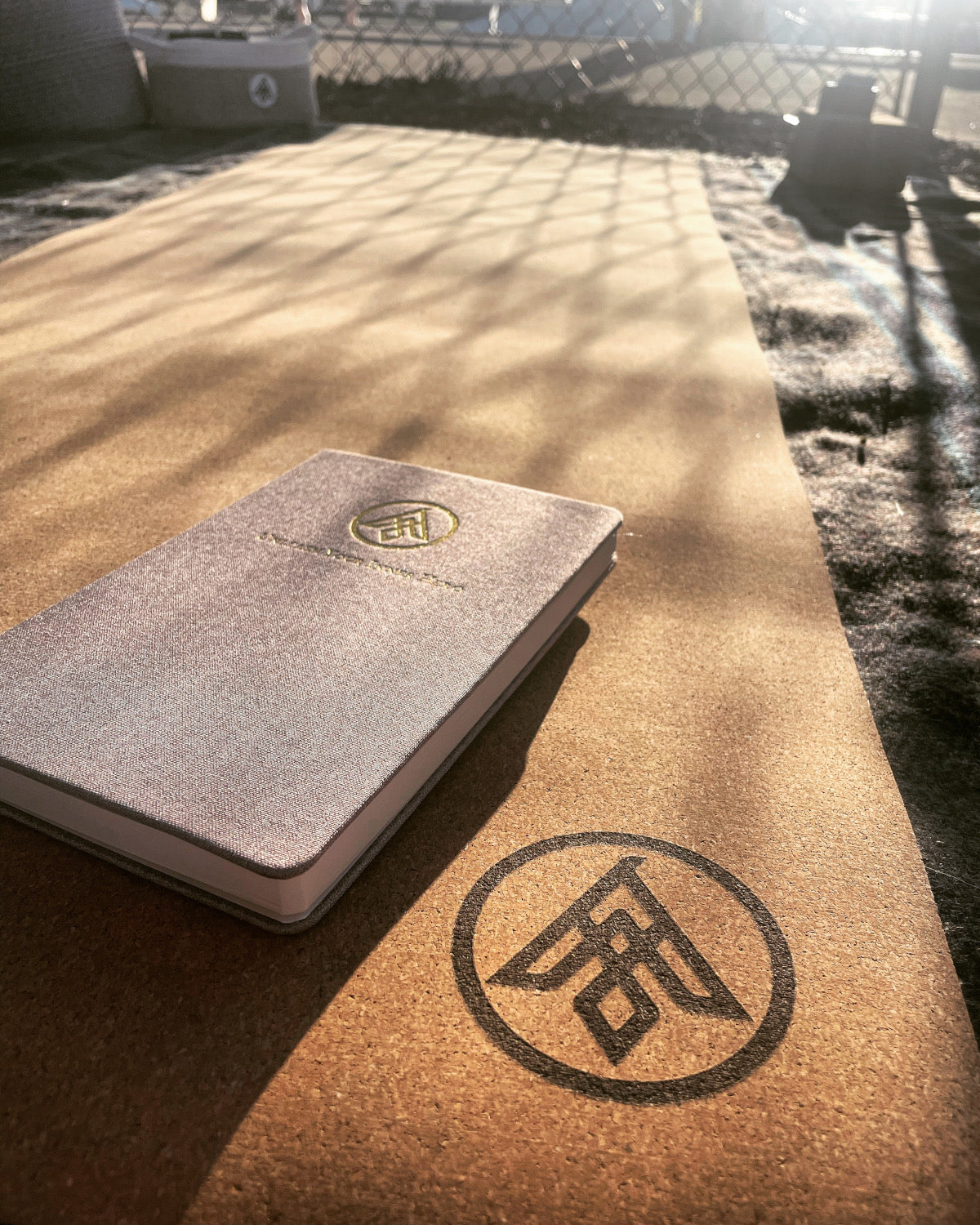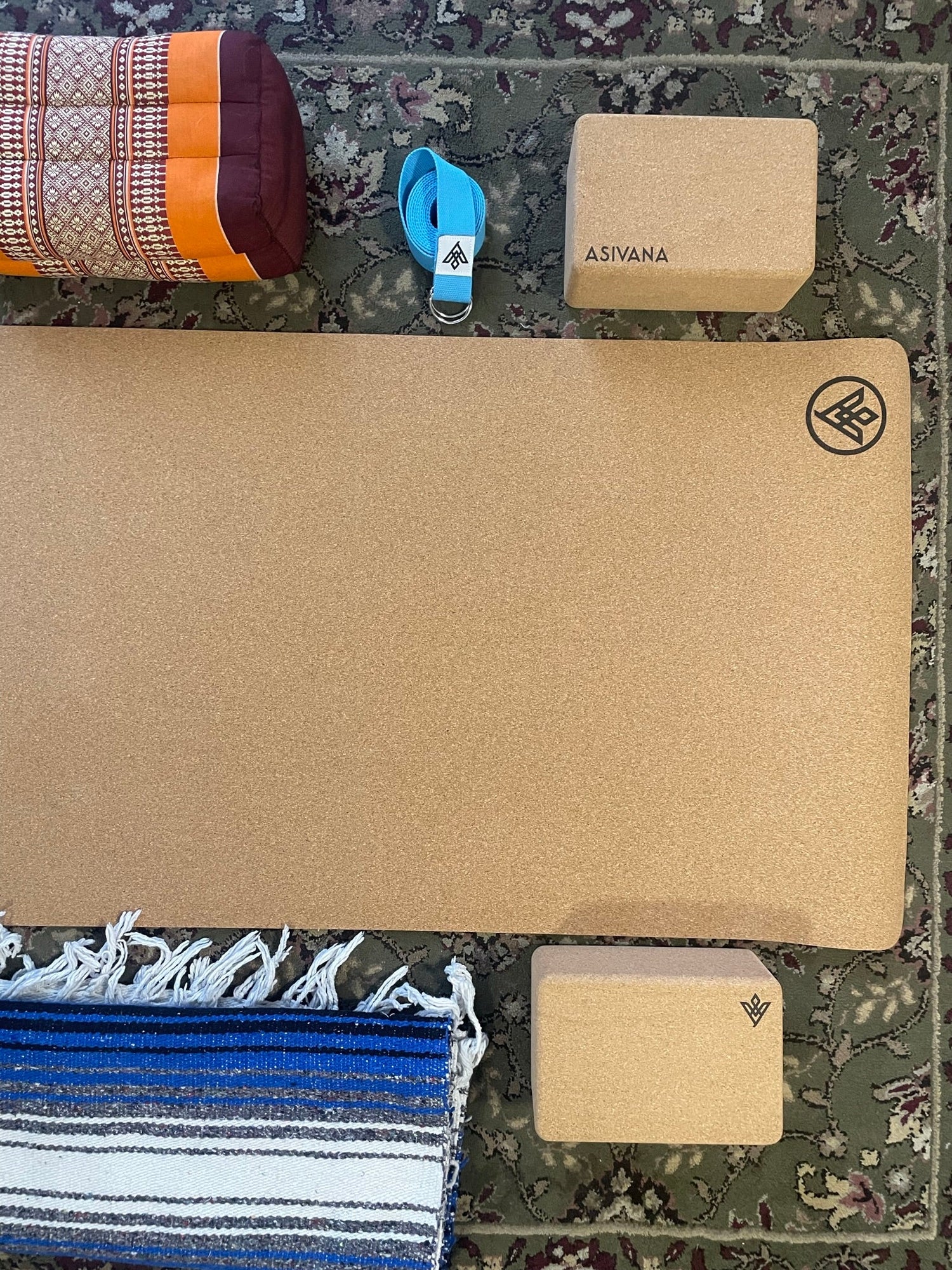I’ve spent countless hours on a myriad of yoga mats, but there is something special about a cork yoga mat. I’ve found it to be my favorite balance of function between stability, comfort, and durability. You're probably wondering what makes this mat so special, right? It’s the cork. Yes, you heard it right, the same cork that's used in your favorite bottle of wine or bulletin board.
Now, you must be wondering, what on earth does cork have to do with yoga? Quite a lot, as it turns out. When it comes to the cork mat, we're not just talking about any yoga mat. This is a yoga mat made with cork on top and natural rubber on the bottom that brings a unique blend of benefits to your yoga practice.
The cork yoga mat is an all-natural product, which for me, is an element of ahimsa, non-harm, that I appreciate when it comes to my yoga practice. Made from the bark of a cork oak tree, this material is naturally occurring, renewable, and most importantly, sustainable. The choice of a cork yoga mat aligns seamlessly with the Asivana ethos of promoting sustainability, personal growth, and unity with nature.

The Significance of Choosing the Right Yoga Mat
We often don't realize how important a good yoga mat is until we’re in the middle of a challenging sequence, and our mat starts slipping, or it doesn’t provide enough cushioning for our knees. I've had my fair share of uncomfortable experiences with unsuitable mats, and let me tell you, it makes a world of difference when you find the right one.
When I talk about the 'right' mat, it isn’t just about a mat that looks good or matches your yoga clothes. It's much more than that. A good yoga mat needs to provide sufficient grip to prevent you from slipping during your practice. It should be comfortable yet firm enough to support your body in various poses, and it should be durable, lasting through hundreds of yoga classes.
Now, why does the choice of a yoga mat cork matter? I’ve found cork mats to be superior when it comes to grip and comfort, especially in a heated room where other mats tend to get slippery or require a towel. And there’s more – the cork yoga mat is an antimicrobial hygienic choice as well. The natural materials actively kill harmful bacteria so when I inevitably forget to clean my mat after class, my mat has my back.
Moreover, a cork mat feels different. It feels like nature beneath your hands and feet, which for me, brings a greater sense of connection and grounding during my practice. And who doesn't want a yoga practice that is not just beneficial to you, but also to the natural world we all share?

What are the Benefits of a Cork Yoga Mat?
Now that we've covered why it's essential to choose the right yoga mat, let's dig into the unique health benefits that a cork yoga mat brings to your practice.
Hypoallergenic Nature of Cork
One of the significant health benefits I've found with using a cork mat is that it’s hypoallergenic. You know those times when you're trying to focus on your yoga practice, but you're getting distracted by itchy skin or sneezing? That could be a reaction to the materials used in your mat. A cork yoga mat reduces the chances of these allergic reactions. Its natural properties make it resistant to allergens such as dust and pet hair, meaning you can focus on your breath, not your sneezes.
Before cork, I would get rashes on my skin from my mats and yoga towels. No matter how I cleaned them, I even had to take breaks from practicing yoga or use the hard floor to avoid harming my skin. Especially true when it comes to my forearm stands, I wasn’t even able to do a dolphin pose without damaging my forearms. Therefore if you are experiencing even a little skin discomfort in your yoga practice, take a moment to ask yourself if it’s because of your yoga mat or yoga towel.
Antimicrobial Properties of Cork
Another health benefit that I've personally appreciated is the antimicrobial nature of cork. This means that it naturally inhibits the growth of germs and bacteria. This can be especially beneficial if you’re someone like me, who practices yoga frequently. You can rest easy knowing that the mat you're lying on isn't harboring any nasty bugs. I've found that I've been able to keep my cork yoga mat cleaner and fresher for longer, thanks to these antimicrobial properties.
In the world of yoga, where we're constantly striving to connect more deeply with ourselves and our surroundings, having a mat that supports our health can genuinely enhance our practice. Not only are you getting a fantastic physical workout, but you're also supporting your health in subtle, significant ways.

Environmental Benefits of using a Cork Yoga Mat
We've talked about how the cork yoga mat contributes to a healthier yoga practice, but how about the health of our planet? You'll be glad to know that your cork yoga mat brings not just personal benefits, but also environmental ones.
Biodegradability of Cork Yoga Mats
One of the key environmental advantages of using a cork mat is that it's biodegradable. This means when your mat's life cycle is complete, it won't sit in a landfill for hundreds of years. Instead, it breaks down and returns to the earth, contributing to the cycle of life rather than disrupting it. I’ve always found comfort in knowing that my choice of a cork yoga mat won't leave a negative footprint on our precious Earth.
Sustainability of Cork Yoga Mats
Another significant advantage is the sustainability of cork. When cork is harvested for your yoga mat, it's taken from the bark of the cork oak tree – a process that doesn't harm the tree and allows it to continue growing. Actually, harvesting cork can extend the life of the tree! Now, that's a win-win in my book.
Furthermore, these cork oak forests (found mainly in Portugal and Spain) are crucial habitats for endangered species and support a high level of biodiversity. By choosing a cork yoga mat, you're directly contributing to the protection of these ecosystems.

Emotional and Psychological Benefits of Using a Cork Yoga Mat
So, we've talked about the health benefits and the environmental positives of using a cork yoga mat. But, there's one aspect that really stands out to me, and that's the emotional and psychological benefits.
Connection to Nature
Firstly, there's the undeniable connection to nature that comes with practicing on a cork mat. When I unroll my cork mat, I know that I am connecting with a piece of nature. I feel the cork grounding beneath my fingers, see its unique patterns, and smell its subtle earthy aroma. This always brings me a sense of calm and grounding - it's as if I'm practicing yoga in a forest, even if I'm indoors.
Mindfulness and Presence
Practicing on a cork yoga mat has also played a big role in developing my mindfulness. The natural, warm feel of the cork under my hands and feet brings my attention beyond my mat, to my interconnected movements and breath. This physical connection to my mat has helped me create a stronger mental connection to my practice, encouraging a deeper level of mindfulness and presence.
A Boost in Confidence
Lastly, the grip of a cork mat has given me a sense of confidence in my practice. It has allowed me to go deeper into my poses, knowing that I won't slip even during the sweatiest sessions. This has boosted my self-confidence and has allowed me to explore more challenging poses with confidence.

Some Personal Experiences on Cork Yoga Mats
I think it's important to share with you my journey and experiences with cork yoga mats. It's been a transformative experience and I feel privileged to have the opportunity to share it with you.
My First Cork Mat Experience
I vividly remember the first time I unrolled my cork yoga mat. I was amazed at the natural, warm, and inviting feel it exuded. I felt an immediate connection, like I was practicing yoga in the heart of a serene forest. The earthy smell, the rustic texture, and the overall feel of the mat captivated my senses, making my yoga session more immersive and satisfying than ever before.
The Inspiration behind the Flux Cork Yoga Mat
I was so inspired by my experience with the cork mat that I decided to design my own, the Flux Cork Yoga Mat. I wanted to create a mat that would capture the warmth and authenticity of cork while providing the best possible support for yoga practice. The Flux Cork Mat is designed for comfort and performance, with just the right amount of cushioning and incredible grip that improves with every session.
How a Cork yoga Mat Impacts My Practice
The cork mat has brought an undeniable joy and motivation to my yoga practice. Each time I step onto my cork mat, I'm reminded of my commitment to my personal growth and the sustainable choices I've made. It's more than just a yoga mat for me, it's a symbol of my dedication to yoga, to the environment, and to the betterment of myself.
I've also noticed an improvement in my practice. The grip of the cork mat provides me the confidence to try more challenging poses, while the natural texture of the mat helps me feel grounded and present in every moment.
The Materials that make a Cork Yoga Mat
When it comes to yoga mats, the materials used can significantly influence your overall practice. Let's explore the common materials used in a cork yoga mat and how they affect your yoga experience.
The Wonder of Cork
First up, let's talk about the star of the show - cork. Cork is the bark of the Cork Oak Tree (Quercus Suber) which grows primarily in the Mediterranean region. What I find fascinating about cork is that it's a renewable resource. Harvesting cork doesn't harm the tree, in fact it actually helps it live a longer and healthier life like going to the spa. Cork trees regrow their bark for 9 years between harvests and live on average to be 150 years old! This makes it a wonderful eco-friendly choice for a yoga mat.

The Blend of Natural Rubber
Many cork yoga mats, like mine, have a backing made of natural rubber. This blend of natural rubber provides the mat with extra padding and a strong grip on the floor, preventing any sliding or shifting during your practice. And don't worry about the sustainability part - natural rubber is derived from the sap of the rubber tree, making it another eco-friendly choice.
Most natural rubber is sustainably grown and harvested in Southeast Asia. The rubber tree is native to the Amazon forest however harvesting rubber from the Amazon has not proven to be sustainable yet.

The Option of TPE
Thermoplastic Elastomers (TPE) are sometimes used as an alternative to natural rubber, especially for those who may have latex allergies. TPE has similar cushioning properties to natural rubber, but it's a synthetic material. If you're choosing a cork yoga mat with TPE, I'd recommend looking for one that is free from toxic materials and is recyclable.
Other Modern Yoga Mat Materials
Just as the world of yoga is diverse, so too is the realm of yoga mat materials. From cork to cotton, each material has its own unique set of benefits and drawbacks. Let’s take a closer look.
PVC (Polyvinyl Chloride) mats are incredibly durable and provide excellent traction, perfect for intense, sweat-inducing practices. However, they're not biodegradable and may off-gas harmful chemicals.
Cotton or Organic Cotton mats are absorbent and washable, which is great for hot yoga yogis. But they may not provide as much cushion or grip as other materials. Cotton is easy to clean and can be sourced sustainably however cotton production is water intensive.
Jute mats blend the breathability of cotton with the toughness of rubber, offering a natural, rustic aesthetic. However, jute can feel rough under the hands and feet and may not offer a lot of cushioning.
Hemp mats are durable, sustainable, and soften with use. But like jute, they can be rough to the touch and might lack sufficient padding for some yogis. Hemp is rarely used in the manufacturing of yoga mats.
Foam mats, typically made of EVA (Ethylene-vinyl acetate), offer extra cushioning and are lightweight. However, they can get scratched or damaged easily and may lack the grippy surface of other mats.
Suede, Microfiber, and Synthetic Leather mats look and feel luxurious. But they can be slippery when dry and require more care to maintain their appearance. Suede is rarely used for yoga mats.
Mats made of Natural Grasses and Reeds, PER (Polymer Environmental-friendly Resin), or Recycled Materials carry a unique aesthetic and celebrate sustainability. But they may lack durability and require more careful maintenance.
Constructing a Cork Yoga Mat - How Cork Yoga Mats are Made
Now, you might be wondering how the materials we just discussed come together to create a cork yoga mat. So, let's get into the nuts and bolts of the construction process, shall we?
A Marriage of Cork and Rubber
Let's start with the marriage of cork and natural rubber. If you flip your cork yoga mat over, you'll find a base layer typically made from natural rubber or TPE. Now, this base isn't there just for looks, it provides excellent grip and ensures your mat doesn't slide during practice.

The cork layer is applied to this base. This is where things get interesting. Manufacturers usually use heat and pressure to bind the cork layer to the rubber base. This process ensures that your mat is durable and that the cork doesn't crumble or peel away with use. And here's a bonus: because this process doesn't require any adhesives or toxic chemicals, your mat remains eco-friendly!
Adding the Finishing Touches
The last stage of the process is finishing. Each cork yoga mat is smoothed and cut to size, creating a clean and professional finish. Some manufacturers even go a step further and laser or print ink designs into the cork surface. This can add a personal touch, but it can decrease grip or may cause damage to the cork.
Durability and Lifespan of a Cork Yoga Mat - Invest in a Cork Yoga Mat?
One of the key features I absolutely adore about my cork yoga mat is its durability. Let's get into why a cork mat is a long-lasting companion for your yoga journey.
Cork's Natural Durability
The resilience of cork itself plays a huge role in the durability of a cork yoga mat. Cork is tough, yet flexible, and that’s why it doesn't wear down easily. It's one of the most durable natural materials out there. I've been using my cork mat for years, and although the cork has darkened, it still functions as good as new!
Lifespan of a Cork Yoga Mat
When it comes to the lifespan of a cork yoga mat, it really depends on how well you take care of it. With proper care, a high-quality cork yoga mat can last you for years or hundreds of classes.
Pros and Cons of Cork Yoga Mats
The Highlights of Cork Yoga Mats
From my years of yoga teaching, I can assure you that each yoga mat comes with its own set of benefits. In this section, we'll delve into why a cork yoga mat could be the perfect choice for you.
Non-Slip Surface
Many of us who've practiced yoga have had that one pose where we've slipped a little, leading to a loss of focus or even a topple. With a cork yoga mat, you can say goodbye to those moments.
Cork's unique cellular structure gives it a natural grip that increases when wet, meaning you can confidently hold your poses even during the most intense hot yoga sessions.
Sustainability
One of the most commendable attributes of a cork yoga mat is its eco-friendliness. The extraction process for cork is gentle and leaves the tree unharmed, ready to regenerate and continue absorbing carbon dioxide. Furthermore, when the cork yoga mat has served its purpose, it is completely biodegradable, returning to the earth from whence it came.
As a yoga teacher and practitioner, it gives me peace of mind to know that my choice of mat aligns with Asivana's ethos of Ahimsa (non-harm) and sustainability.

Durability
If there's one thing you want from your yoga mat, it's to withstand your daily practices, and the cork yoga mat excels here. Cork is known for its durability and can withstand many years of use without deteriorating.
From my personal experience, the Flux Cork Yoga Mat has stood the test of time, surviving countless sessions without showing signs of wear and tear. That's the kind of resilience and longevity you want in a yoga mat, especially if you're someone who enjoys a daily yoga practice.
The Lowlights of Cork Yoga Mats
The truth of the matter is that no yoga mat is perfect, not even our beloved cork yoga mat. Like everything in life, it comes with a few drawbacks. However, the beauty lies in acknowledging these imperfections and finding ways to work around them. Now, let's address the elephant in the room - the cons of using a cork mat.
Weight Matters
The first thing that you might notice about your cork yoga mat is its weight. Natural rubber is inherently denser than many other materials used in yoga mats, such as EVA or PVC. This density translates to a slightly heavier mat.
If you're someone who travels frequently or walks a considerable distance to your yoga class, the added weight of a cork mat might be a concern for you. But I've got to say, from my experience, this weighty aspect of the cork yoga mat also means it stays put during your practice. Not to mention the weight is from dense material that protects your joints not airy foam that compresses right to the floor.
The Price of Sustainability
Another potential downside to a cork yoga mat is the price. Generally, they tend to be a little pricier than their synthetic counterparts. This is primarily due to the sustainable harvesting and processing methods used to create cork mats, which are more labor-intensive and thus, more costly. However when it comes to top quality yoga mats, cork mats tend to be more affordable without sacrificing the benefits.
The Power of Choice
Now, I've given you the highs and lows, but what I want you to remember is this: the choice is always yours. You get to decide what works best for you and your yoga practice. It’s a journey, my friends, and each choice we make is simply a stepping stone along the path.

Jack's Personal Experience with a Cork Yoga Mat
Speaking from personal experience, I can tell you that the cons of a cork yoga mat, though they exist, are heavily outweighed by the benefits.
Now, I am someone who loves to explore every yoga pose under the sun & moon, and as such, I am incredibly tough on yoga mats. I've ripped holes in just about every top quality mat out there, but the cork mat? It has stood up to my relentless practice just as well, if not better, than any other mat I've used.
I love using cork mats. In fact, I don't think I'd ever go back to using any other modern mat. I firmly believe that the cork yoga mat represents the next leap in yoga mat technology. And here's why - cork returns us to using materials that are sustainably created by nature. They come from living trees, not materials born from fossil fuels.
There is a sense of relief that comes from knowing that my yoga mat is not contributing to further fossil fuel drilling, toxic manufacturing processes, or filling up landfills. It's a peace of mind that aligns with the very purpose of my yoga practice – to create harmony within myself and with the world around me.
But of course, my experience might not be the same as yours, and that's perfectly okay. The beautiful thing about yoga is that it is a personal journey, unique to each of us. And finding the right tools for that journey, including the perfect mat, is a part of the adventure.
How to Clean a Cork Yoga Mat and Cork Yoga Mat Care
In my experience, maintaining a cork yoga mat doesn't require much effort. This is largely due to cork's antimicrobial properties which resist bacteria and fungi. Isn't that fascinating?
Let me share with you how to clean a cork yoga mat. All you'll need is a soft cloth, some warm water, and mild soap. Be careful with harsh chemicals though, as they might not be friendly to your mat. If you prefer, you can use essential oils which are safe to use on cork mats.
Here's the method I follow:
- Dampen the cloth with warm water, making sure to squeeze out any excess water.
- Dap a little mild soap onto the cloth. Alternatively, you could spray a mild yoga mat cleaning solution onto the mat or an essential oil mix.
- Delicately wipe the surface of the mat.
- Once you're done, allow the mat to dry completely before rolling it up.
It's really that simple! A few moments of your time after each yoga session can keep your mat in great shape. This routine not only extends the life of your mat, but also ensures it's ready and fresh for your next practice. And hey, if you occasionally forget to wipe your mat down, its antimicrobial properties will have your back. But you never do that, right?
Extending the Lifespan of Your Cork Yoga Mat: Storage Tips and More
How you store your cork mat can significantly affect its longevity, and if you're anything like me, you want to get the most out of your yoga equipment.
One of the mistakes I've seen people make is storing their cork yoga mat improperly. It's not just about where you store it, but how. Here are my top tips for storing your mat to extend its life:
- Roll it right: After use, it's best to roll your cork mat with the cork side out. This prevents the corners from curling up over time, which can be a bit of a nuisance during your yoga practice.
- Give it space: Try to store your cork mat in a spacious area, if possible. Compressing it in a tight space could lead to unwanted creases or folds.
- Store it out of the sun: Excessive direct sunlight can cause the cork to dry out and become brittle. I always recommend storing your mat in a cool, dry place.
- Keep it dry: Cork is naturally water-resistant, but it's not entirely waterproof. It's best to avoid storing your mat in damp or humid areas to maintain its integrity.
- Hang it up: If you have the space, hanging up your cork yoga mat is a great storage option. This helps the mat retain its shape and allows any sweat or moisture to evaporate quickly.
By following these storage tips, you'll significantly extend the life of your cork yoga mat and enjoy a better yoga experience. I wrote an article that goes into more details on cleaning your yoga mat and caring for your yoga mat.
Variations of Cork Yoga Mats
There's a cork yoga mat for every yogi's personal needs, be it size, thickness, shape, or color.
Standard Size of Cork Yoga Mats
Most standard yoga mat dimensions, including cork yoga mats, come in a size of around 72 x 24 inches. However, if you're a taller person like me, you might find this size a bit restrictive. Don’t worry; some cork mat manufacturers offer extra-long mats up to 84 inches long. You can stretch out fully in savasana without your feet hanging off the end.
Standard Thickness of Cork Yoga Mats
Thickness is another crucial factor that can affect your comfort during practice. Standard cork yoga mats are typically around 4-5mm thick, providing a good balance between comfort and stability.
Standard Shape of Cork Yoga Mats
While most cork yoga mats come in the standard rectangular shape, there are also round and oval options available. These can be a fun alternative and give you a little more freedom to move in all directions. But keep in mind, these would not likely be welcomed in a yoga studio so use at in your home space or studio.
Color of Cork Yoga Mats
Here's where things get a little different with cork yoga mats. The natural cork color is a beautiful, warm, and earthy tone, and it's what you'll find on the top side of most cork mats. On the flip side, many mats feature a colored natural rubber base. So, if you like a little splash of color in your yoga gear, you can choose a mat with a colored base to suit your style.
Cork surfaces may be dyed colors but this might reduce the natural quality of your cork yoga mat.
Experience Asivana's Flux Cork Yoga Mat
I want to personally share with you my go-to, all-around favorite cork mat. I present to you, the Flux Cork Yoga Mat by Asivana Yoga.
The Size and Thickness
The Flux Cork Yoga Mat offers a generous size of 72"x24" which, in my experience, caters to the needs of most yogis. Its size allows for plenty of space to move, stretch and dive deep into your poses without feeling cramped or confined. Even at 6’1” I fit on the mat and fit in well at my local studios.
It features a thickness of 5mm, providing an excellent balance between comfort and stability. I found this to be particularly beneficial when holding poses for longer periods or when I'm flowing through a more dynamic practice.
The Materials
This cork yoga mat combines the best of both worlds - the natural rubber base gives you the grip on the floor and cushioning on your joints, while the cork layer provides a beautifully smooth yet non-slip surface, especially when things heat up and you start to sweat.
One thing I love about this cork yoga mat is the quality of the materials. The cork is sourced directly from Portugal, home to some of the finest cork in the world. This speaks to the dedication of Asivana Yoga to provide high-quality, sustainable products that we can feel good about using.
My Experience
From the moment I unrolled my Flux Cork Yoga Mat, I felt an immediate connection. The natural, subtle earthy smell of cork brought an added sense of calm and tranquility to my practice. The mat's texture felt pleasing under my hands and feet, offering a perfect balance between firmness and softness.
Moreover, I appreciate that it's not just about the aesthetic or feel of the mat. The sustainability aspect, the ethical sourcing, and Asivana's ethos are deeply embedded in every yoga mat. Every time I step onto it, I'm reminded of my connection to nature and my contribution to a more sustainable yoga practice.

Frequently Asked Questions About Cork Yoga Mats
What makes cork a good material for yoga mats?
Cork is an excellent material for yoga mats because it provides a naturally grippy surface that improves with sweat, making it ideal for hot or intense yoga sessions. It is also antimicrobial, self-cleaning, and incredibly durable.
Are cork yoga mats eco-friendly?
Yes, cork yoga mats are environmentally friendly. Cork is a sustainable material that can be harvested without harming the tree, and it's biodegradable too. Same with a natural rubber bottom which is sustainably harvested sap from a rubber tree.
How do cork yoga mats compare to other types of mats in terms of comfort and performance?
Cork yoga mats are known for their superior grip and comfort. They offer a firm but soft surface that protects joints during yoga practice with high density of material, not air like traditional foam mats.
Are cork yoga mats suitable for all types of yoga?
Absolutely! Cork mats are suitable for all types of yoga, from hot yoga to gentle restorative classes and everything between.
Do cork yoga mats require any special care or maintenance?
Cork yoga mats require minimal maintenance. A quick wipe down after use is often enough to keep them clean due to their self-cleaning properties. After getting wet it’s best to lay them flat or hang them on a towel rack to dry.
Is the surface of a cork yoga mat comfortable?
Yes, cork has a smooth, warm, and pleasant texture that most yogis find extremely comfortable.
Can I use my cork yoga mat outdoors?
Yes, cork yoga mats can be used indoors and outdoors. However, prolonged exposure to the sun can dry out the cork, so it's best to store them in a cool, shaded area when not in use. Make sure the mat is laid on a flat surface. Just like with other mats, sharp points may cause damage to the mat.
Are cork yoga mats hypoallergenic?
Yes, cork is naturally hypoallergenic, making it a great choice for those with allergies or skin sensitivities.
Are cork yoga mats heavy to carry around?
While cork mats may be slightly heavier than foam or TPE mats, they're still quite portable and often come with carrying straps for easy transport. This is due to the density of natural rubber used on the back of cork yoga mats. A cork mat with TPE backing is very lightweight but lower quality.
How long does a cork yoga mat last?
With proper care, a cork yoga mat can last for several years of regular practice.
Can I use both sides of a cork yoga mat?
Yes, cork yoga mats can work with either side up however the cork top is not particularly great at sticking to the floor.
What happens if my cork yoga mat gets wet?
Your grip will increase! Also, cork is a highly water-resistant material. If your cork yoga mat gets wet, simply wipe it down and let it air dry completely.
Does a cork yoga mat smell?
The short answer is no, one of the advantages of a cork yoga mat is that it doesn't have the strong chemical smell that some other mats have. Your brand new cork yoga mat will likely have a subtle earthy smell to it from the cork and natural rubber. This smell fades rather quickly after use.
Can I do heated yoga on a cork yoga mat?
Absolutely! In fact, the heat and sweat from your practice will make the cork even grippier.
Is a cork yoga mat a good investment?
Yes, although cork yoga mats may be a bit more expensive than other mats initially, their durability and quality make them a great investment in the long run.
Is a cork yoga mat suitable for beginners?
Yes, the excellent grip and stability provided by cork yoga mats make them suitable for yogis of all levels, including beginners.
Can I travel with a cork yoga mat?
Yes, although cork yoga mats are a bit heavier than some alternatives, they can still be rolled up and carried with you for on-the-go yoga practices with or without a carrying strap. Their weight, and shape like other mats, may make them difficult to fly with.
How do I store my cork yoga mat?
You can roll up your cork yoga mat and store it in a cool, dry place. It's best to keep it out of direct sunlight to avoid drying out the cork.
Do I need a yoga towel with a cork yoga mat?
No, thanks to the grippy nature of cork, there is no need for a separate yoga towel. However, you can still use one if you prefer.
Is it okay to leave my cork yoga mat unrolled?
Yes, it is perfectly fine to leave your cork yoga mat unrolled. This can actually help to keep it flat and prevent curling at the edges. It’s a good idea to hang dry cork yoga mats on a towel rack after a hot yoga class.
Does the color of the cork change over time?
Yes, cork retains its natural color very well however the color will darken with use over time.
Are cork yoga mats safe for kids and pets?
Yes, cork is a natural, non-toxic material making cork yoga mats safe for both kids and pets. However, like all yoga mats, they should be used with supervision.
Embrace the Cork Yoga Mat Experience
So there we have it, friends. Through the ins and outs of the cork yoga mat, learning about its unique attributes, benefits, and proper maintenance. Here's a quick recap of our journey:
- Discovered the sustainability of cork and how it provides a non-toxic, eco-friendly mat option. A cork mat isn't just a tool, it's a statement of love for our planet.
- Explored the grip factor. Cork's natural properties make it an incredibly non-slip surface, especially when you're breaking a sweat.
- Discussed the cleaning process, emphasizing the cork mat's self-cleaning properties and the simplicity of maintaining it. A bit of water and mild soap, a good scrub and air-drying - that's all it takes.
- And finally, the right ways to store your cork mat to prolong its life.
It's all these factors and more that makes the cork yoga mat an exciting choice for yogis at any level. I remember when I first stepped onto my Flux cork yoga mat by Asivana Yoga, I knew there was no turning back.
I want to extend that same transformative experience to you, don't just enhance your practice, become a part of a movement that cherishes personal growth, environmental consciousness, and a unified yoga community.
My suggestion? Own the Flux Cork Yoga Mat. When I say 'own,' I don't just mean 'buy.' I mean, invite it into your yoga journey. Let it be a part of your exploration, your growth, and your progress. This is more than a product; it's a companion on your path towards self-discovery and well-being.
There's an old saying that goes, "Yoga is not about touching your toes. It's about what you learn on the way down." I believe that the tools we choose for our journey – like a cork yoga mat – play a vital part in those learnings.
So there it is, yogis, my comprehensive guide to cork yoga mats. It's been a pleasure to walk you through this exploration. Remember, yoga is a practice of unity - with ourselves, with each other, and with our planet. Let's make choices that reflect this unity.
Are you ready to welcome a cork yoga mat into your practice? Are you ready to unleash your inner hero? I have a feeling that you are.
Till we meet on the mat again, Namaste.





